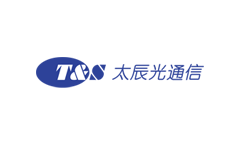What Are the Common Fiber Optic Attenuators?

A fiber optic attenuator is an optical device that can reduce the energy of an optical signal. Through the attenuation of input optical power, it can avoid the distortion of the optical receiver due to too strong input optical power.
As an optical passive device, a fiber attenuator is usually made of attenuation fiber with metal ions. It can adjust the optical power to the required level. It is mainly used in optical communication systems to debug the optical power performance, calibrate the calibration of optical fiber instruments and reduce the attenuation of optical fiber signals.
1. Why use fiber optic attenuators?
The intensity of optical signals received by various optical receiving equipment is limited, and the equipment can not work normally if the optical power is too weak or too strong within a certain range. When the optical power is too strong, the optical power will be adjusted by light attenuation to reduce it to an appropriate range, otherwise, even if the equipment can be used, it will affect the service life.
The attenuation power of a fixed fiber optic attenuator is fixed (such as 1dB, 5dB, or 10dB). The attenuation power of a 3dB fiber optic attenuator is 3dB. This fiber optic attenuator is generally used in telecommunication networks, optical fiber test equipment, local area network (LAN), and cable television (CATV) systems. Fixed fiber attenuators can be divided into online and plug-in types.
The shape of the plug-in fiber optic attenuator is similar to that of an optical connector. The difference is that both ends of the plug-in fiber optic attenuator are male connector interface and female connector interface respectively. This fiber optic attenuator either uses an air gap to achieve attenuation or uses metal ions to attenuate optical fiber to achieve an attenuation effect.
The attenuation power of adjustable fiber optic attenuator is not invariable, but changes with the change of conditions. Its variation span is 0.5dB, 20dB, 50dB, etc. And some even reach the accuracy of 0.1dB and 0.01dB. Tunable fiber attenuators are generally used for accurate testing and measurement of optical fibers. At the same time, they are also widely used in erbium-doped fiber amplifiers. Their function is to balance the optical signal power in different channels.
2. Fiber optic attenuators are divided into the following four categories according to different interfaces
SC fiber optic attenuator: it is applied to SC optical fiber interface, which is similar to the RJ-45 interface, but the SC interface is more flat and the contact inside is a copper column.
LC fiber optic attenuator: it is applied to LC optical fiber interface and can be used to connect the SFP module. A modular jack (RJ) latch mechanism is adopted, which is easy to operate and commonly used in routers.
FC fiber optic attenuator: it is applied to FC optical fiber interface. The outer sleeve is wrapped with a metal sleeve, and the fastening method is a turnbuckle. It is generally used on the ODF side and is mostly used for distribution frames.
ST fiber optic attenuator: it is applied to the st optical fiber interface. The shell is circular and fastened with the turnbuckle. It is commonly used in optical fiber distribution frames.
- +1 Like
- Add to Favorites
Recommend
- Types of Fiber Optic Attenuators
- What Are the Functions of the Fiber Optic Attenuators?
- Why Fiber Optic Attenuators Are Used in Fiber Optic Cable Transmission Lines?
- Fiber Optic Connectors Glass vs. Copper
- Knowledge about Fiber Optic Enclosures
- The Ultimate Guide to Fiber Optic Transceiver Modules
- Unveiling the Advantages of Fiber Optic Transceiver Modules
- Fiber Optic Patch & Splice Enclosures
This document is provided by Sekorm Platform for VIP exclusive service. The copyright is owned by Sekorm. Without authorization, any medias, websites or individual are not allowed to reprint. When authorizing the reprint, the link of www.sekorm.com must be indicated.


















































































































































































































































































































































































































































































































































































































































































































































































































































































































































